What is Cryo-EM?
Cryo-EM (single-particle cryo-EM) is a characterisation technique for structural biology, with a high resolution comparable to X-ray crystallography. This article explains how it works, what it can be used for and a step-by-step explanation of the workflow.
Blue Scientific is the official distributor for Gatan systems for electron microscopes in the Nordic region (Norway, Sweden, Denmark, Finland, Iceland). For more information or quotes, please get in touch.
Gatan instruments
Contact us on +44 (0)1223 422 269 or info@blue-scientific.com
What is Single Particle Cryo-EM?
Single-particle cryo-electron microscopy is a technique in structural biology for solving structures at atomic resolution. It involves studying a frozen-hydrated sample in vitreous (non-crystalline) ice. This retains the ultra-structure, buffer and ligand distribution from its natural state.
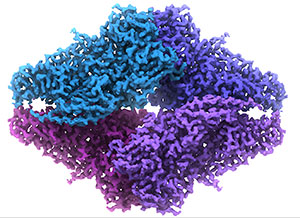
Cryo-EM structure of beta-galactosidase with 2.2 Å resolution. Courtesy of Center for Cancer Research, NIH.
Applications
Cryo-EM complements X-ray crystallography, revealing structural details without the need for a crystalline specimen. It also complements structural NMR studies, because samples can be larger than 150 kDa. In structural biology, cryo-EM is used to study:
- Viruses
- Small organelles
- Macromolecular biological complexes
- Molecular interactions in supramolecular assemblies or machines
More about cryo-EM in structural biology…
Mapping the coronavirus with cryo-EM…
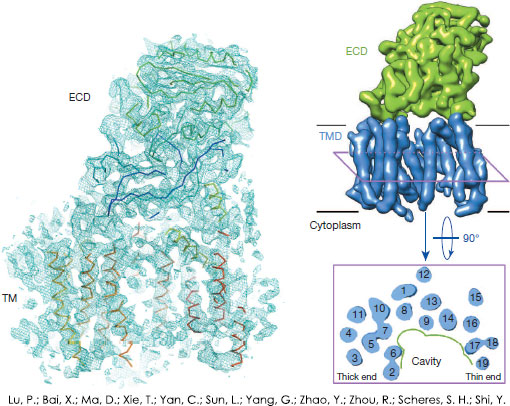
First 3D structure of human γ-secretase. 4.5 Å resolution.
How it Works
A TEM (Transmission Electron Microscope) records high-resolution images of thousands of identical, randomly oriented, molecules from each sample. The images are grouped, aligned and averaged with image classification algorithms to differentiate the various orientations of the 3D molecule. With ideal samples, cryo-EM can solve the molecular structure with a resolution below 2 Å. This level of resolution level was inconceivable just a few years ago.
This rapid improvement in resolution is possible because of direct detection cameras, which do not suffer from the loss of detail that occurs with conventional cameras. They measure the electron image directly, giving you better quality data and higher resolution.
The Gatan K2 Summit is a unique direct detection camera that uses a electron counting to record images. It has super-resolution technology to recognise and count individual image electrons in real-time, ignoring noise. The detective quantum efficiency (DQE) at half Nyquist is unmatched at 52%. This is more than a six-fold improvement compared to conventional cameras.
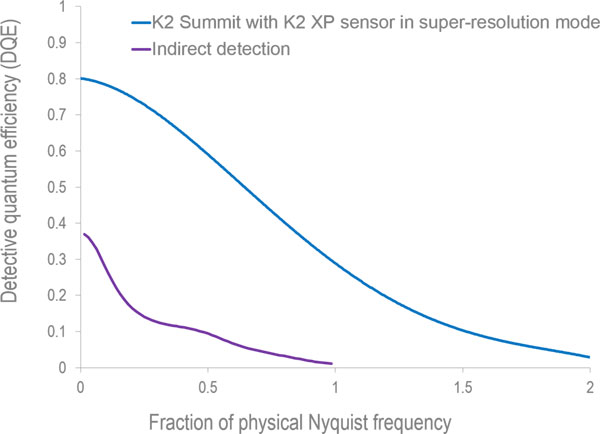
Cryo-EM DQE efficiency of the Gatan K2 direct detection camera, compared to conventional indirect cameras.
Advantages of Cryo-EM
- Study samples in their natural, hydrated state – Observe the structure in a biologically relevant environment, including sample and buffer concentration.
- Suitable for larger assemblies – Characterise molecules larger than 150 kDa, including those that are heterogeneous, metastable, have multiple sub-units or are difficult to crystallise.
- Atomic resolution structures – Study asymmetric side chains, hydrogen bonds and water molecules, as well as alpha helices and beta sheets.
- Controlled chemical environment – Adjust the experimental conditions to observe molecules in various functional states.
- No crystallisation – Skip the long, uncertain preparation steps, for faster results.
How to Perform Cryo-EM
Step 1: Purify
For high quality results, the sample should be purified and structurally intact. Ideally, a buffer solution should be used that keeps the sample biochemically active. The concentration of molecules needs to be high enough for studying under a microscope, but not so high that they aggregate together. Experimental conditions should be adjusted for a uniform conformational state.
Step 2: Plunge Freeze
Freeze the specimen so it doesn’t freeze-dry in the microscope’s vacuum. Instantaneous freezing eliminates water crystals that can affect the structure. Apply a small amount of the specimen in solution to a TEM grid, then remove excess liquid with blotting paper. Then plunge the grid into liquid ethane to wet the specimen, freeze it and create non-crystalline / vitreous ice.
Step 3: Transfer to TEM
Transfer the frozen specimen to a specialised TEM holder to maintain liquid nitrogen temperature. To avoid contamination, use a cryo-workstation to load the sample into the holder, and a cryo-shield to transfer it to the microscope. The Gatan Elsa is a specially-designed cryo-transfer holder for keeping samples frost-free.
Step 4: Imaging
Electrons can damage the structural integrity, so the total dose should be kept in the region of 10 – 30 e–/Å2. Use low dose imaging procedures to navigate and focus, before taking your images.
The high DQE of the K2 Summit gives you the highest quality images of delicate biological samples, with a high signal to noise ratio. This enables you to visualise water molecules, ions and ligand structures in the 3D particle reconstruction. The image quality can be further enhanced with a dose fractionation feature on the K2 camera. This saves full frames at up to 40 frames per second, to correct specimen motion and minimise drift.
Step 5: Analysis and Reconstruction
With Gatan’s Microscopy Suite software you can analyse and export data in various formats. It can be imported into a wide range of third party software packages for 3D reconstruction and visualisation.

Structure of Escherichia coli β-galactosidase (∼465 kDa) at 3.2 Å resolution. Proc Natl Acad Sci U S A. 2014 Aug 12;111(32):11709-14.
Instrumentation
For the highest resolution cro-EM structures, use the Gatan K2 camera and GIF Quantum LS imaging filter. Blue Scientific is the official Nordic distributor for Gatan – if you have any questions or would like further information about any of these instruments, please get in touch.
- NEW K3 camera – Sets a new benchmark for imaging performance for direct detection cameras
- K2 camera – 10x higher frame rate than other cameras, and a DQE as high as 80%.
- GIF Quantum LS imaging filter – Maximises resolution and contrast.
- Elsa cryo-transfer holder – For transferring samples to your TEM frost-free.
- Latitude S – High-throughput data collection software.
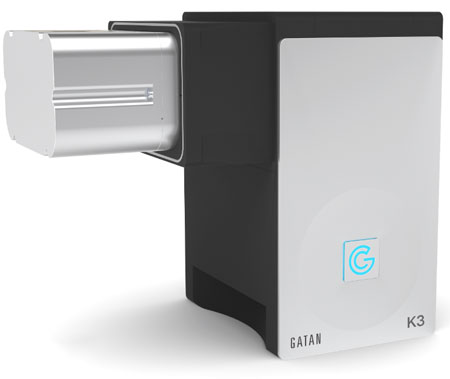
Gatan K3 Camera
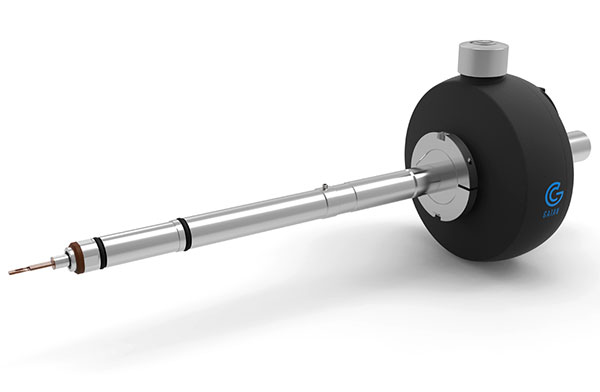
Gatan Elsa cryo-transfer holder


